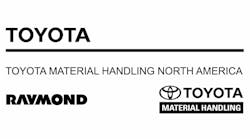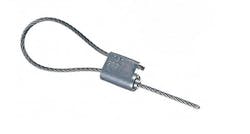The following case study was submitted by TydenBrooks:
A leading fertilizer producer, was experiencing corrosion of the standard aluminum bodied cable seals they were using to transport ammonium nitrate due to the corrosive and volatile nature of this chemical. Cable Seals, sometimes called barrier seals, use a metal locking body and cable to secure shipments, storage, or control access in manufacturing and logistical settings. These seals can be applied to shipping containers, rail cars, truck doors, and storage facilities or containers.
Depending on the diameter of the cable these seals can be used to secure cross-border shipments or, on the opposite end of the spectrum, drums and access panels. The versatility of these seals makes them an ideal security solution for companies with diverse needs.
The producer used large diameter tamper evident cable seals in the shipment, via rail cars, and storage of ammonium nitrate as part of their security and safety practices. Unfortunately, the cable components were corroding at an accelerated rate due to the reaction of ammonium nitrate and the galvanized steel cables used in the seals they were using, causing them to rust and foul before usage. Powdered ammonium nitrate dust had been settling on the seals while in storage or when applied to rail cars on the production site, the exposure was unavoidable and widespread. The spoilage greatly reduced the useful life of the seals and drove up cost for the fertilizer producer.
The fertilizer producer was not able to accept alternate cable seal as other options included metals that would have even more damaging reactions to the compound. This is due to the locking bodies of alternative seals being made of zinc could trigger and exothermic reaction when exposed to water in the presence of ammonium nitrate, such a reaction could lead to fire or explosion. In fact, ammonium nitrate was the cause of the 1947 Texas City explosion, one of the largest industrial accidents in US history, that killed over 400 people and injured 4,000 more.
As part of their safety procedures the fertilizer producer published the following guidance in handling ammonium nitrate
“Ammonium nitrate may explode under conditions of confinement and high temperature. Avoid containers, piping, or fittings made of brass, bronze or other copper containing alloys or galvanized metals. Do not run pumps with the discharge or suction valves closed; pump must be on circulation. If material is evaporated to dryness, special hazards are involved, and special firefighting precautions and methods are recommended. Ammonium nitrate is a strong oxidizer. It is capable of undergoing detonation if heated under confinement or if subjected to very strong shocks.”
Further guidance issued by the Fertilizer institute on Fertilizer Grade Ammonium Nitrate (FGAN) states:
“Avoid contamination of FGAN with inorganic materials that may contribute to its sensitivity to explosion, including chlorides and some metals, such as chromium, copper, copper alloys such as brass or bronze, cobalt, and nickel, and finely divided or powdered metals that may act as fuels.”
Given these challenges and the manufacturer’s standards for transportation that required a cable seal be used to secure railcar shipments of ammonium nitrate a new seal had to be developed. As our standard “non-spark” option, the Non-Ferrous EZ Loc cable seal, contains locking mechanisms made from bronze, a zinc locking body and a copper cable all of which posed a potential risk when used in this production environment. TydenBrooks worked with within these constraints to develop a non-reactive seal, using a stainless-steel cable as opposed to galvanized, that was more resilient to corrosion. Additionally, due to the reactiveness of zinc the new seal used an aluminum locking body that further reduced the risk accidental fire or explosion.
The non-reactive cable more than doubled the useful life of the cable seal, saving the fertilizer producer time and money while significantly reducing risk and waste. Further, TydenBrooks was able to retain the same levels of tamper evident measures as their standard Flex-Secure aluminum bodied cable seal. This was achieved by using a non-preformed stainless-steel cable, which frays when cut, in the design of the replacement seal. The non-performed cable, in addition to serialized numbering, prevented the seals from being cut and reapplied or replaced without facility personal noticing the intrusion.












